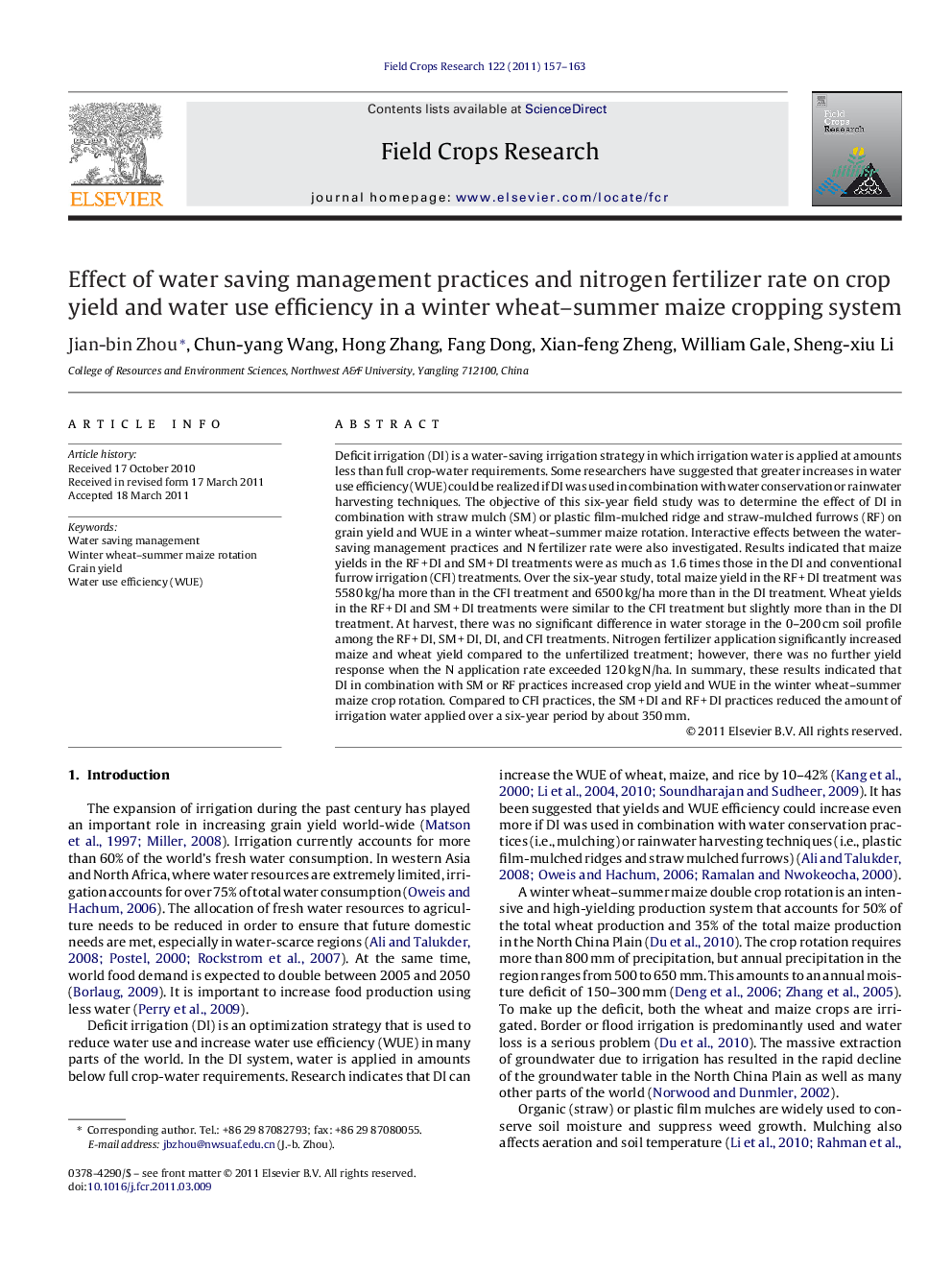| کد مقاله | کد نشریه | سال انتشار | مقاله انگلیسی | نسخه تمام متن |
|---|---|---|---|---|
| 4510627 | 1321866 | 2011 | 7 صفحه PDF | دانلود رایگان |

Deficit irrigation (DI) is a water-saving irrigation strategy in which irrigation water is applied at amounts less than full crop-water requirements. Some researchers have suggested that greater increases in water use efficiency (WUE) could be realized if DI was used in combination with water conservation or rainwater harvesting techniques. The objective of this six-year field study was to determine the effect of DI in combination with straw mulch (SM) or plastic film-mulched ridge and straw-mulched furrows (RF) on grain yield and WUE in a winter wheat–summer maize rotation. Interactive effects between the water-saving management practices and N fertilizer rate were also investigated. Results indicated that maize yields in the RF + DI and SM + DI treatments were as much as 1.6 times those in the DI and conventional furrow irrigation (CFI) treatments. Over the six-year study, total maize yield in the RF + DI treatment was 5580 kg/ha more than in the CFI treatment and 6500 kg/ha more than in the DI treatment. Wheat yields in the RF + DI and SM + DI treatments were similar to the CFI treatment but slightly more than in the DI treatment. At harvest, there was no significant difference in water storage in the 0–200 cm soil profile among the RF + DI, SM + DI, DI, and CFI treatments. Nitrogen fertilizer application significantly increased maize and wheat yield compared to the unfertilized treatment; however, there was no further yield response when the N application rate exceeded 120 kg N/ha. In summary, these results indicated that DI in combination with SM or RF practices increased crop yield and WUE in the winter wheat–summer maize crop rotation. Compared to CFI practices, the SM + DI and RF + DI practices reduced the amount of irrigation water applied over a six-year period by about 350 mm.
► Three water saving practices and N fertilizer on yield and WUE of wheat –maize were studied with a 6-yr trial.
► Water saving practices included deficit irrigation (DI), DI+ SM (straw mulch), DI+ RF (ridge and furrows).
► DI combined with SM or RF increased crop yields and WUE in comparison to conventional furrow irrigation (CFI) practices.
► SM+DI and RF+DI practices reduced irrigation water by about 350 mm over 6-yr period.
Journal: Field Crops Research - Volume 122, Issue 2, 18 May 2011, Pages 157–163